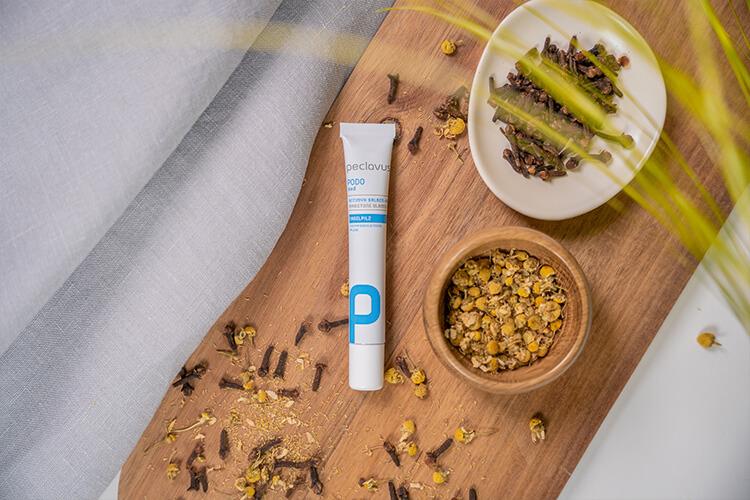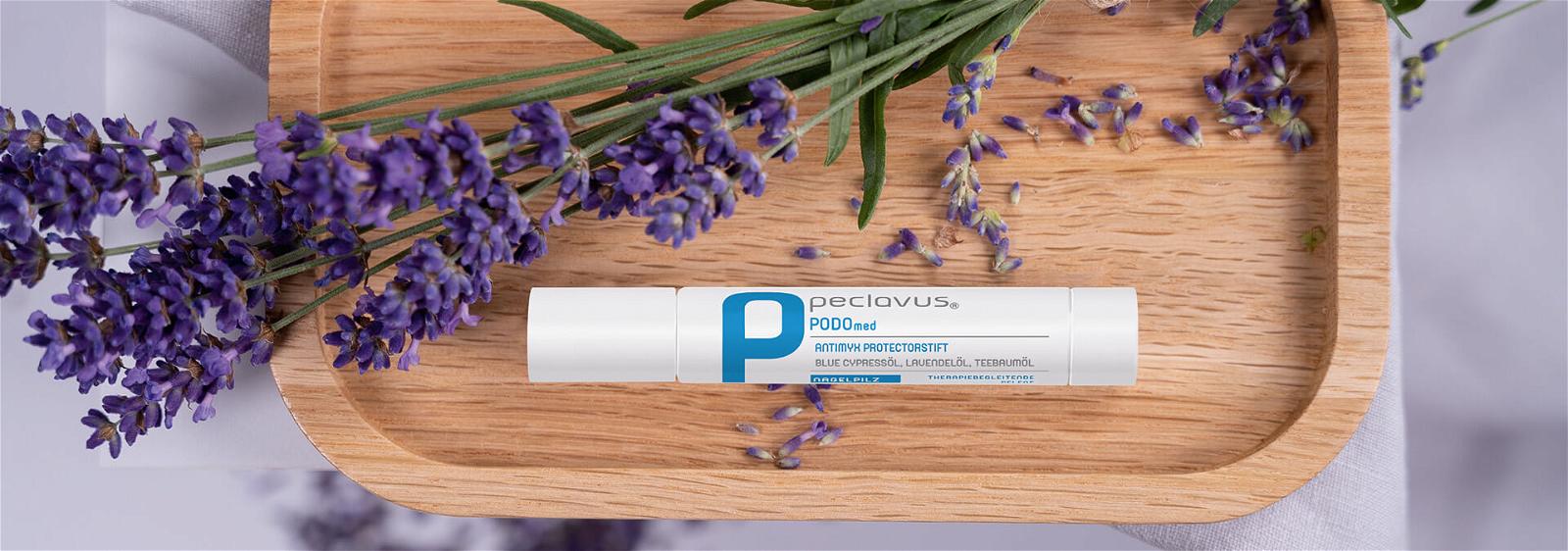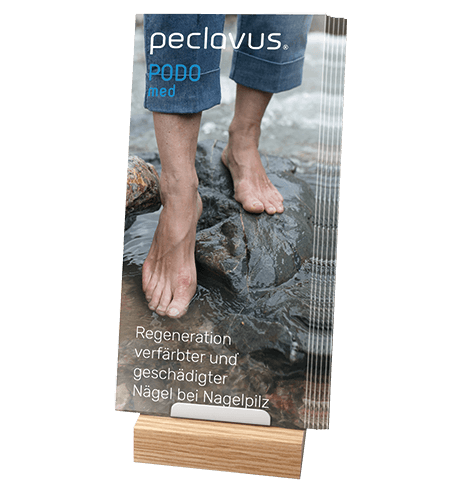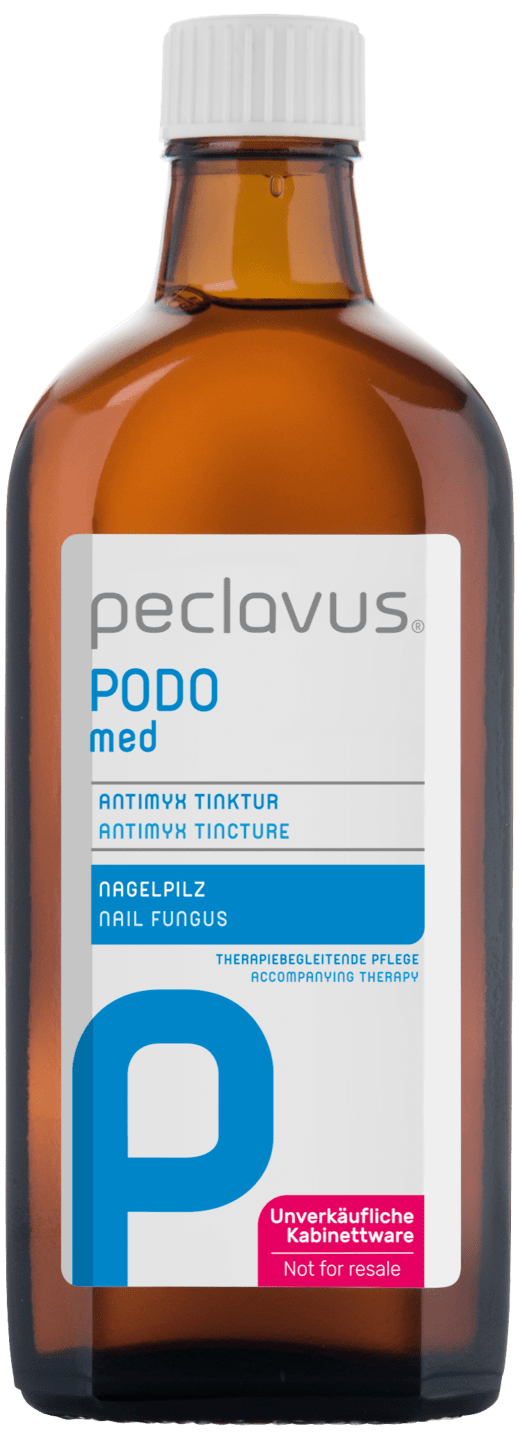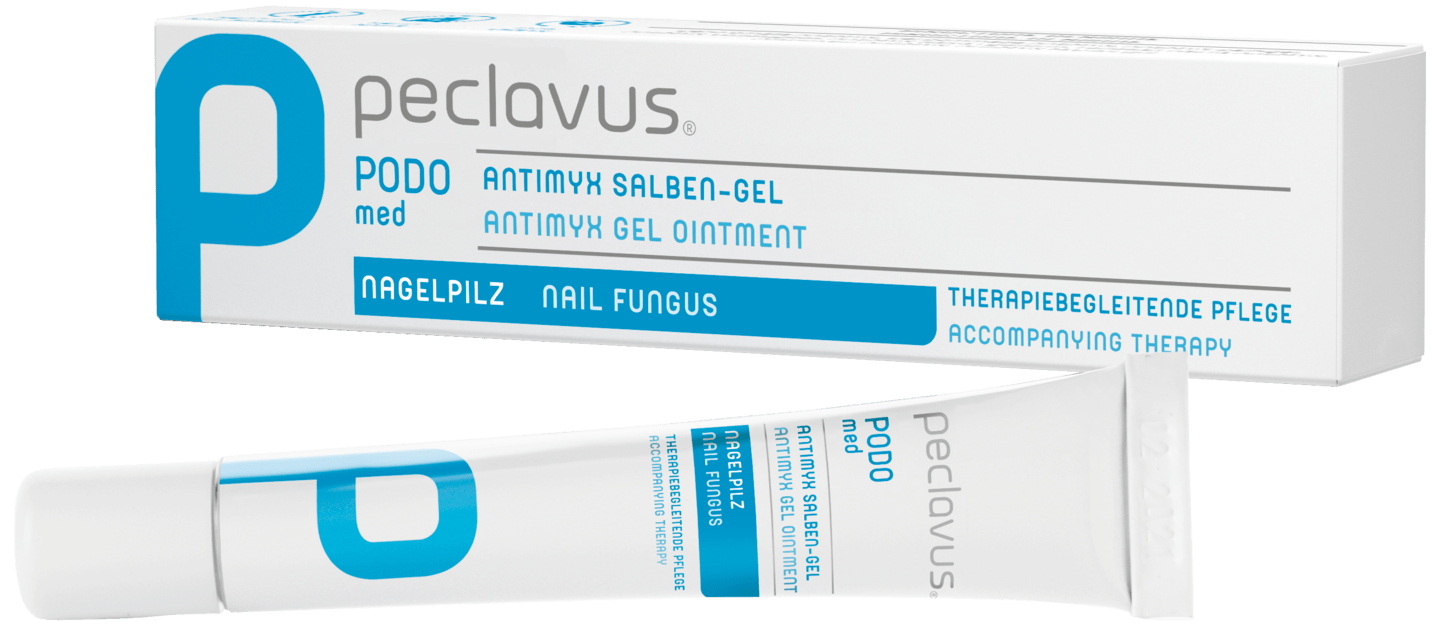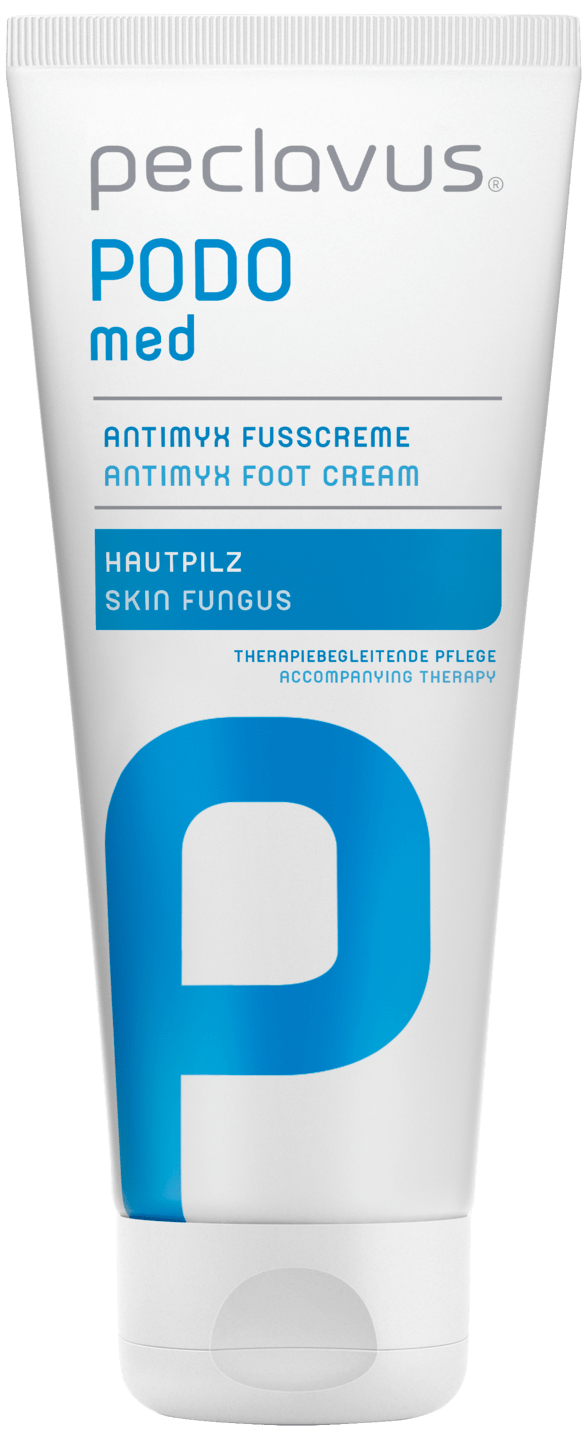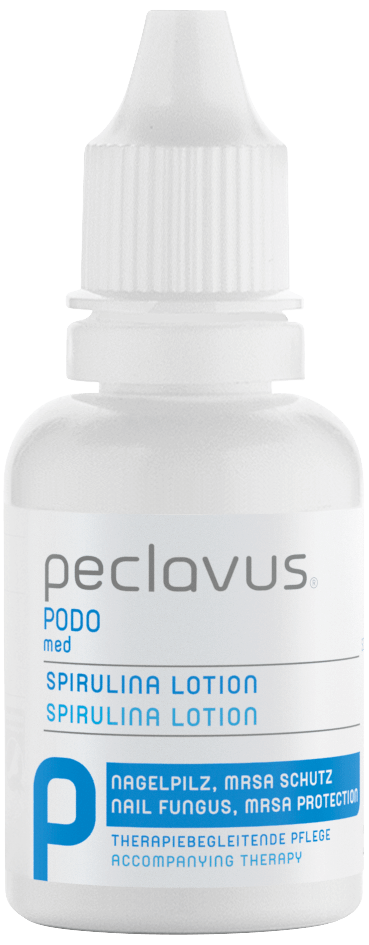“In most cases of nail mycosis, the location of the fungus is under the nail plate. In order for antifungal agents to penetrate the nail plate and reach where they are needed, continuous application is essential. My personal tip: Encourage patient compliance at home, by recommending the peclavus PODOmed AntiMYX Protector Stick which has been proven in our school of podiatry, to be easier and more precise to apply than a lotion or cream, especially for older patients.”
Nail mycosis (fungus)

Treat and prevent nail mycoses effectively
Fungal infections of the toenails and fingernails are certainly familiar to everyone from their everyday work. If an infection is not treated, the fungus continues to spread, the nail becomes thick and brittle and sometimes detaches itself completely from the nail bed. Fortunately, there are effective remedies to combat nail mycosis. We have summarised the most important facts and tips on this topic for you.
Correct diagnosis for successful treatment
Nail fungus is an infection of the nail plate by dermatophytes, more rarely by yeasts or moulds. Some nail diseases look like fungal infections but are not, for example nail disorders caused by bacteria, psoriasis or nodular lesions on the nail, circulatory disorders or diabetes mellitus. Therefore, a successful treatment always starts with a correct diagnosis, ideally with the help of a dermatological report. The fungus almost always penetrates from the outside under the nail plate. At first, the infected nail loses its shine and turns yellowish or greyish-brown. As the infection progresses, crumbling, crusty and discoloured nail plates form. The nail becomes thick and hardly grows in length. In the early phase, the patient usually does not feel any discomfort. However, especially if the nail infection is accompanied by a skin fungus (dermatomycosis), the infected area causes itching. If the nail fungus stays untreated, the worst case scenario is the loss of the affected nail.
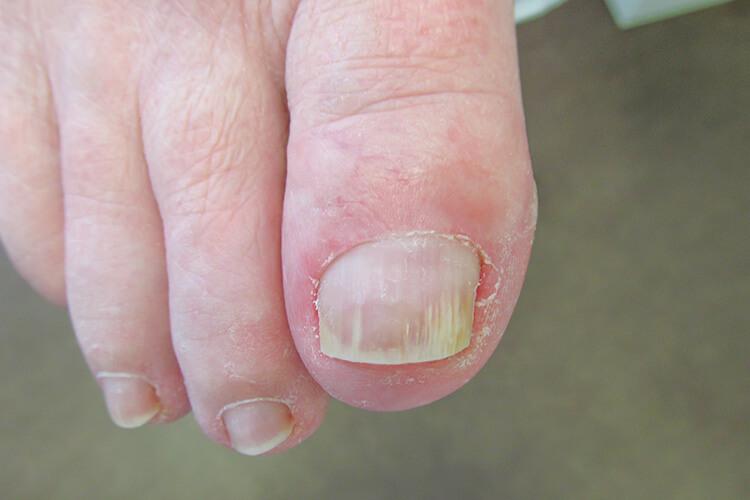
Causes and risk factors
Nail fungus can affect anyone, young or old, healthy or with pre-existing conditions. Diabetics, smokers and people with circulatory disorders, e.g. PAD (peripheral arterial disease), are particularly at risk. A weakened immune system can also contribute to nail mycosis. A fungal infection is not only unsightly, but also a health hazard. The earlier it is treated, the better it can be prevented from spreading to other nails and the skin. Unfortunately, nail fungus does not heal by itself and can also be contagious. It can also spread to other people in your own household, but also in public, such as at the swimming pool or during sports.
Effective and thorough treatment
At first, there should always be a professional visual examination and a postive test for dermatophytes. All recommended courses of action suggest that all of the damaged nail material is removed in order for the treatment to have the best possible results.
Proper care and consistency during the entire treatment process and effective products tailored to the diagnosis are prerequisites for successful outcomes. The peclavus® PODOmed AntiMYX protector pen uses a specially developed “carrier system” that reliably transports the well-tolerated active ingredients right into the nail matrix. The duration of treatment can be between three and six months, and in individual cases up to a year. Even the best treatment is only effective if the patient actively contributes to the successful outcomes. It is important that the patient applies it regularly, i.e. daily, and as directed. A possible fungal infection in the surrounding skin should not be overlooked. If this is not treated (e.g. with peclavus PODOmed AntiMYX foot cream), it can spread to healthy nails with the same microbes if the conditions are right. Systemic, medicinal treatment is advised if more than 50% of a nail or more than three nails are infected, or if the patient is unable to carry out external treatment himself due to lack of mobility. In this case, the patient would need to consult with their GP or dermatologist.
Actions to be taken in the practice
To prevent the risk of infection to other patients, all surfaces contaminated during treatment must be disinfected properly. Disinfect and sterilise your instruments correctly and dispose of used disposable materials immediately. Wear a disposable apron, face mask and disposable gloves during treatment and use a powerful suction device when removing affected nail tissue. Cover your patient’s healthy nails during treatment to minimise the risk of infection. Avoid even the smallest injuries during treatment in order not to create further entry points for the fungus. To complete the treatment, apply the PODOmed AntiMYX tincture or perform a tamponade with the AntiMYX gel ointment.
Practical knowledge for you: free expert interview
Identify and treat nail fungus





















































